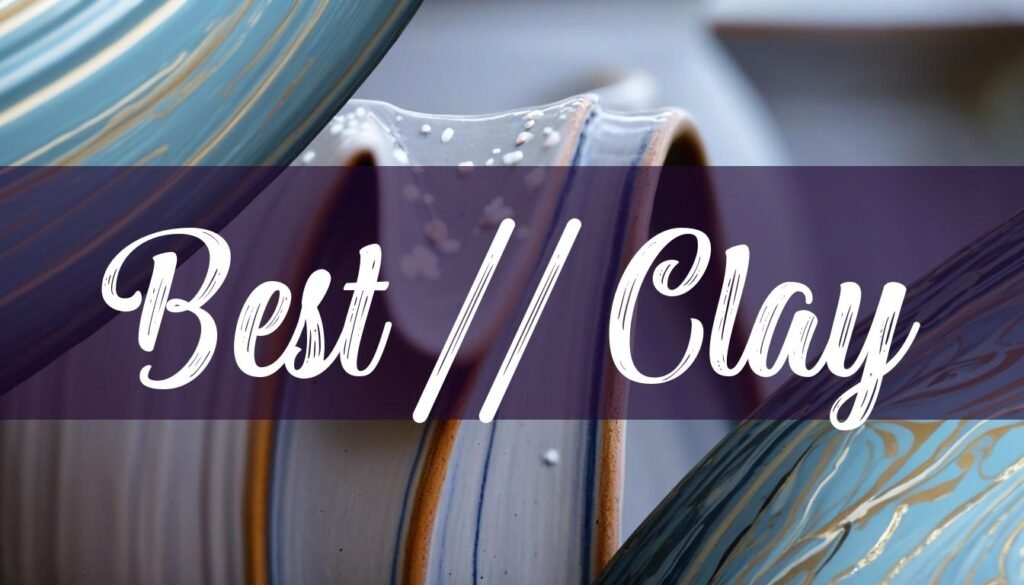Choosing the best clay to make pots with involves understanding the unique characteristics of different clay types and how they align with your pottery goals. Each clay body possesses its own set of properties, influencing workability, firing temperature, and the final product’s durability and aesthetics. Whether you’re a beginner or an experienced potter, selecting the right clay is crucial for bringing your creative vision to life.
Exploring the Primary Clay Types
The world of pottery clays is vast, but most fall into one of three primary categories: earthenware, stoneware, and porcelain. Each type has distinct properties that make it suitable for different purposes. Additionally, there are also other types of clay such as ball clay, fire clay, and air dry clay.
Earthenware clay is known for its versatility and rich, warm colors. As one of the earliest forms of clay used by potters, it’s appreciated for its high plasticity, making it easy to manipulate and shape. Earthenware typically matures at a lower firing temperature, between 950°C and 1,100°C (1,745°F and 2,012°F). This lower firing temperature can be an advantage for potters without access to high-temperature kilns. However, it also means that earthenware remains porous after firing unless coated with a glaze. Because of its forgiving nature and ease of use, earthenware is a popular choice for beginners and is well-suited for creating decorative items, flowerpots, and sculptures. If you’re interested in exploring other forming techniques, consider slip casting to expand your pottery skills. For those intrigued by the history, learning about Southwestern Pottery from Anasazi to Zuni traditions can provide additional context.
Stoneware is a durable and versatile clay that fires at a higher temperature range, typically between 1000°C and 1380°C. Stoneware becomes stone-like and highly durable when fired. Its ability to withstand heat makes it suitable for oven-safe and microwave-safe items. Unlike earthenware, stoneware is non-porous, making it ideal for creating functional pottery such as dinnerware, vases, and cookware. Stoneware clays often contain mineral impurities that give them a gray or brownish color, though potters can now find stoneware in various colors. Its workability and ability to be painted with underglazes and glazes make it a favorite for both hand-building and wheel throwing.
Porcelain is often considered the most refined and delicate of the clay types. Known for its purity and translucence, porcelain is typically white and has a smooth, fine texture. Porcelain clays, sometimes referred to as kaolin, are composed primarily of kaolin clay and can withstand extremely high temperatures. Firing temperatures for porcelain range from 1200°C to 1400°C (2200°F – 2600°F). Although it can be challenging to work with due to its low plasticity and quick drying nature, mastering porcelain allows potters to create elegant and functional pieces such as dinnerware, sculptures, and decorative items.
Key Considerations for Choosing Clay
Selecting the best clay for your pottery project involves several important considerations. These include your skill level, the desired aesthetic and function of your pots, and specific clay properties like shrinkage rate, plasticity, and firing requirements.
For beginners, earthenware clay is often the most accessible choice because it is more forgiving and easier to work with. Its high plasticity allows for easy manipulation, making it ideal for practicing basic techniques such as pinching, coiling, and slab building. As you gain experience, you might explore stoneware, which offers increased durability and versatility for functional pottery. Porcelain, with its delicate nature and demanding techniques, is generally better suited for more advanced potters who have developed a solid foundation in clay handling and firing.
The intended use of your pottery will significantly influence your clay selection. If you plan to create dinnerware, mugs, or vases that need to hold liquids, stoneware or porcelain are excellent choices due to their non-porous nature when fired at the correct temperatures. For decorative items or sculptural pieces that do not require water-tightness, earthenware can be a great option. Consider the aesthetic you want to achieve. Porcelain offers a smooth, white surface that is ideal for delicate designs and vibrant glazes, while earthenware provides a more rustic look with its natural colors and textures.
Clay properties such as shrinkage rate, plasticity, and firing requirements are critical factors in the selection process. Shrinkage refers to the amount the clay shrinks during drying and firing, which can vary between clay types. High shrinkage can lead to cracking or warping if not managed properly. Plasticity is the clay’s ability to be shaped and molded without cracking or breaking. Clays with high plasticity are generally easier to work with, especially for intricate designs. Firing requirements include the temperature range at which the clay matures and vitrifies. Ensure that the clay you choose can be fired in your kiln or at a facility you have access to. By carefully considering these factors, you can select the best clay to achieve your desired results and create beautiful, functional pottery.





